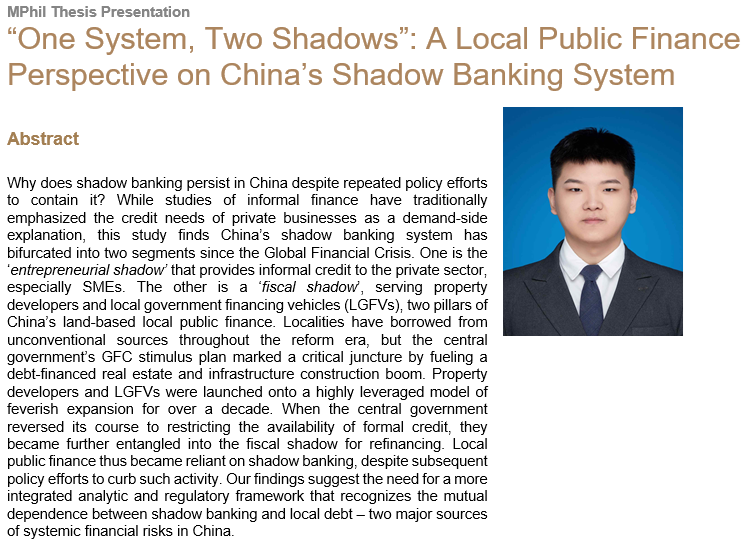Abstract
Why does shadow banking persist in China despite repeated policy efforts to contain it? While studies of informal finance have traditionally emphasized the credit needs of private businesses as a demand-side explanation, this study finds China’s shadow banking system has bifurcated into two segments since the Global Financial Crisis. One is the ‘entrepreneurial shadow’ that provides informal credit to the private sector, especially SMEs. The other is a ‘fiscal shadow’, serving property developers and local government financing vehicles (LGFVs), two pillars of China’s land-based local public finance. Localities have borrowed from unconventional sources throughout the reform era, but the central government’s GFC stimulus plan marked a critical juncture by fueling a debt-financed real estate and infrastructure construction boom. Property developers and LGFVs were launched onto a highly leveraged model of feverish expansion for over a decade. When the central government reversed its course to restricting the availability of formal credit, they became further entangled into the fiscal shadow for refinancing. Local public finance thus became reliant on shadow banking, despite subsequent policy efforts to curb such activity. Our findings suggest the need for a more integrated analytic and regulatory framework that recognizes the mutual dependence between shadow banking and local debt – two major sources of systemic financial risks in China.

